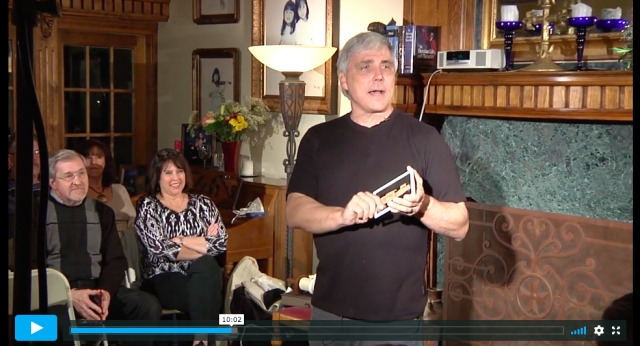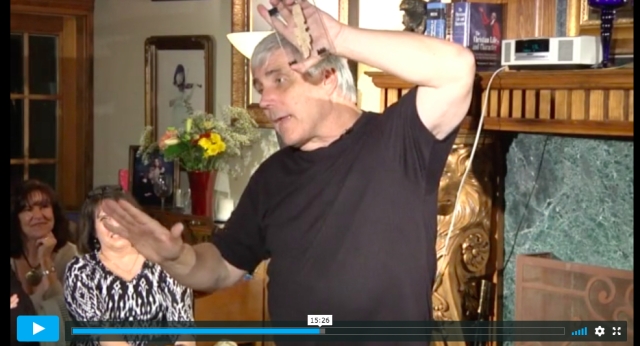 So, I think I may be starting to alleviate some of my confusion about Scott Carroll and the Green Collection papyri. One part of all this that was unclear to me was the status of several manuscripts acquired or “discovered” by Scott Carroll that were not immediately related to the Museum of the Bible project. What happened to these pieces? What had escaped me what the possibility that Scott Carroll was not just a broker of manuscript purchases for others but also a purchaser and owner of manuscripts himself.
So, I think I may be starting to alleviate some of my confusion about Scott Carroll and the Green Collection papyri. One part of all this that was unclear to me was the status of several manuscripts acquired or “discovered” by Scott Carroll that were not immediately related to the Museum of the Bible project. What happened to these pieces? What had escaped me what the possibility that Scott Carroll was not just a broker of manuscript purchases for others but also a purchaser and owner of manuscripts himself.
This point is clarified in a video (apparently recorded in a home in California) with an upload date of 21 April 2015. It was filmed some time after Carroll had parted ways with the Greens and the Museum of the Bible enterprise and had started his own business ventures. [[Update 28 July 2019: David Bradnick points out that the event was held on 2 March 2014.]] It would thus be odd if Carroll still had Green Collection papyri in his possession at the time of the video. But Carroll does display several actual manuscripts in this video and seems to confirm that he is the owner of these pieces (the presentation was put online in three separate files; my references will be to part number and time marker). So, in part 2 at about the 35 second mark, just before passing out the first of several artifacts to the audience, he encourages them to be careful, and in reference to himself and his wife says:
“These things are under our ownership.”
Here are the papyrus pieces that Carroll displayed with his identifications below (all from part 2 of the film, time points given at the bottom of the images):

Menander (no work named), said to have come from a mummy mask.

Euripides (no work named)

Aristophanes (no work named, other unidentified fragments in the frame as well)

Plato (no work named)

Iliad (codex leaf)
So again, these papyrus manuscripts of classical authors seem to be the property of Scott Carroll himself and not the Green Collection. This was news to me.
As was the case with the last film of Scott Carroll that I described, there is a lot going on in these videos–more than I can address here. There are numerous manuscripts that Carroll mentions but does not display, including a fragment of Suetonius (“Life of Caesar Augustus”) said to have been identified “in Istanbul” “5 days ago” (part 1, 8:35) and several “second century” New Testament fragments (part 1, beginning at about the 16:50 mark). At the conclusion, the host of the event (part 3, at about the 25 minute mark) encourages the audience to learn more about one of Carroll’s business undertakings, Ancient Asset Investment, which promises a 3-to-1 return to people who buy antiquities and donate them to non-profit organizations for the tax write-off: “. . .So a person who wants a tax write-off that’s major, I mean, so that you don’t pay taxes for the next year and a half, two years, uh you buy one of these treasures, and it’s, it’s a legal, uh, way to do it.” This tax loophole is similar to that used by the Green family and detailed in a 2018 article by Candida Moss and Joel Baden.
Finally, there is some fascinating information about Scott Carroll’s acquisition of mummy masks. I’ll turn to that in a separate post.
The full film can be viewed on Vimeo as “Hearts of Purpose,” episodes 30-32: Part 1, Part 2, Part 3


Reblogged this on Talmidimblogging.
Pingback: More of Scott Carroll’s Papyri? | Variant Readings
Pingback: The Green Collection Mummy Masks: A Possible Source | Variant Readings
Pingback: Scott Carroll’s Christian Manuscripts | Variant Readings
Pingback: Another Part of Scott Carroll’s Manuscript Network | Variant Readings
The Plato (Phaedo 107bc) is the papyrus featured at https://facesandvoices.wordpress.com/2015/03/14/have-you-ever-seen-this-papyrus-before/ . Transcript with images: https://web.archive.org/web/20150313182354/http://ancientassetinvestments.com/wp-content/uploads/2013/12/PlatosPhaedo.pdf .
Yes, I had touched base with Roberta on that papyrus a while back and had been wondering if those appraisal reports were still online anywhere. I’m happy to see that they are. I had been interested because the person set to publish this papyrus was (of course!) Dirk Obbink.
Pingback: Dirk Obbink, Scott Carroll, and a Papyrus of Plato | Variant Readings
Pingback: Recently Emerged Papyri of Dubious Origins: A Working List | Variant Readings
Pingback: Once Again, Scott Carroll and a Papyrus of Plato | Variant Readings
Pingback: The Hobby Lobby v. Dirk Obbink Ruling | Variant Readings